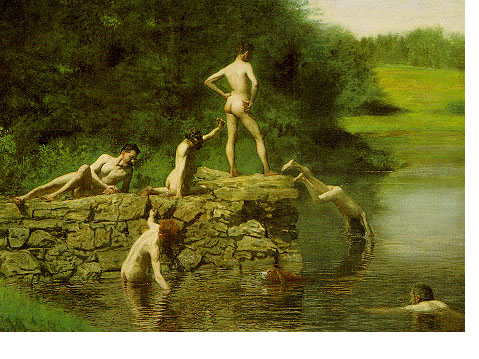1882 "Song of Myself," lines 200-217

The Swimmers
Oil on canvas, 27 3/8 x 36 3/8 in.

The Swimmers
Oil on canvas, 27 3/8 x 36 3/8 in.
Eakins met the poet, took pictures of him, and painted his portrait. Moreover, a number of art historians and literary critics have concluded that Swimming is a response to Whitman's "Song of Myself," especially to that section of the poem treating the twenty-eight bathers. In a way analogous to Whitman's construction of idyllic cities, Eakins manages to convey a sense of openness, freedom and candor, to create an idealized country setting, despite locating the painting on a river near mills. (There are no clothes in sight here and, apparently, none of the usual burdens of life.) Eakins's candor as a photographer and painter is rightly praised, but even he acknowledges the squeamishness of some of his contemporaries by artfully turning legs and arms so as to hide the genitals of the bathers.
1 Lincoln Kirstein, "Walt Whitman and Thomas Eakins: A Poet's and a Painter's Camera-Eye," Aperture 16, no. 3 (1972): no pagination.